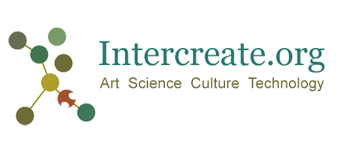exhibition site photos
Introduction
This page should be treated as speculative, as it contains some thoughts on positions of the works exhibited, but this needs now to be negotiated. Much is likely to change.
The general shot above shows the level 2 main entrance. In the centre is the moa and kiwi. Some aims for the install are: 1. Mingling works with the Museum collection, opening dialogues to co-located spaces and objects. 2. Clustering works in groups, to make SCANZ exhibition works more apparent. 3. Having tours and a guide map to works. 4. High quality presentation and images are required for the Leonardo publication. The lighting conditions are suitable. Images less than really good will not be used.

Above is the opposite corner of the level two display area.
This is in the Taonga (Treasures) Galleries, which we have to ask special permission for. I’m suggesting that we project Mike Paulin’s work on the side of the sail in the centre of this photo.

Above the signs is where we are considering putting Josh Wodaks’ images. Also in the Taonga Gallery.
We plan to project Te Huirangi Waikerepuru’s work on a translucent screen, in the Taonga Gallery. This is the view of the gallery from just inside the entrance.
Sonja van Kerkhoff and Sen McGlinn are proposing a spiral free standing structure and we are suggesting in the above area. Its at the top of the stairs.
This is an option for Janet Laurence. There is an opportunity to engage with a range of subjects. This clearly is the native insect and bird life section, with a full moa skeleton and kiwi in cases.
A clearer shot of the display cases in this area.
This would be another option for Janet Laurence.
This could also be as well. Its spectacular in a mundane sort of way. All the display cases have lights, some are dimmable.
On one side of level 2, there are three cases in a row. We are thinking of the outside ones containing jellyfish by Anne Pincus and the middle containing the cyanobacteria by Hideo Iwasaki. One thing we are suggesting is to supplement some of the existing information in this area, which covers the period 65-21 million years ago, by including information about bacteria in this time period. Or single celled life forms if that is suitable.
This is a front view of a case for jellyfish or bacteria.
There is a large gate way towards the rear of this photo that is framed by blue panels. The left upright panel is a proposed position for Tracey Benson’s work, although this involves some negotiation, to see if hanging vertically rather than horizontally is OK.
This is the right hand side of the blue gateway, and suggested for Kura Puke’s work. All positions do need positive responses from the artist and we can have one to one discussions to resolve any matters arising.
This area is just around the corner from the blue gate way area above. It is proposed for the Galactic wind data project by Nina Czegledy and collaborators.






















